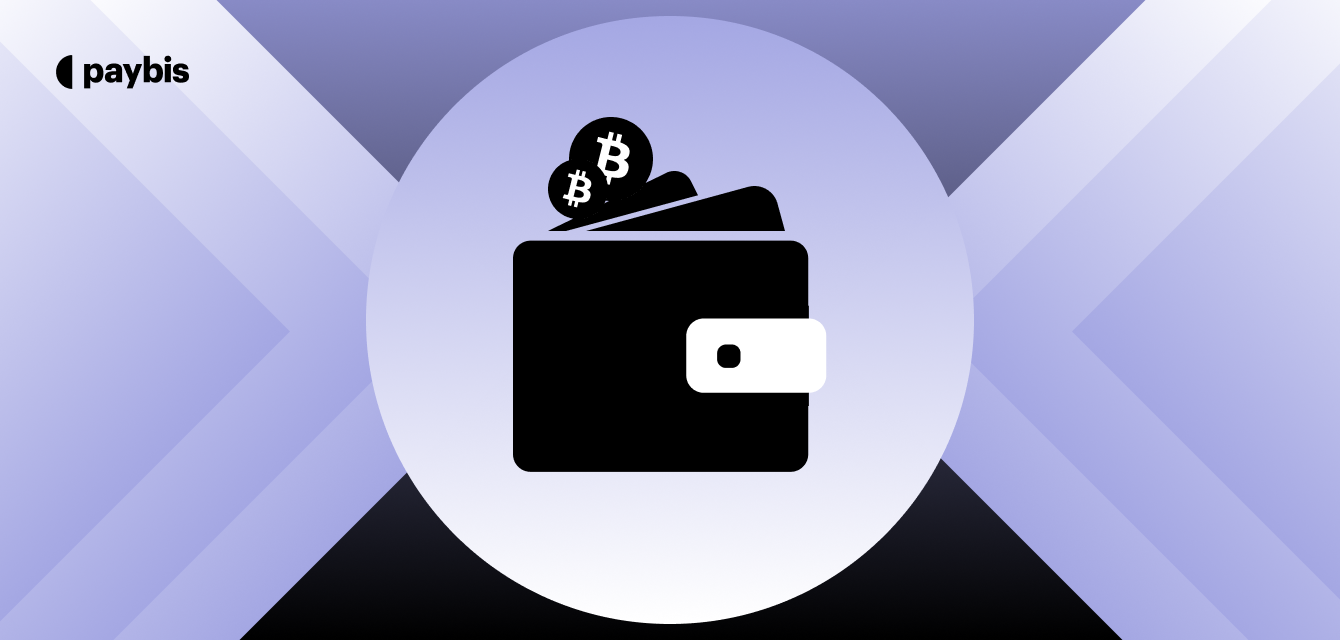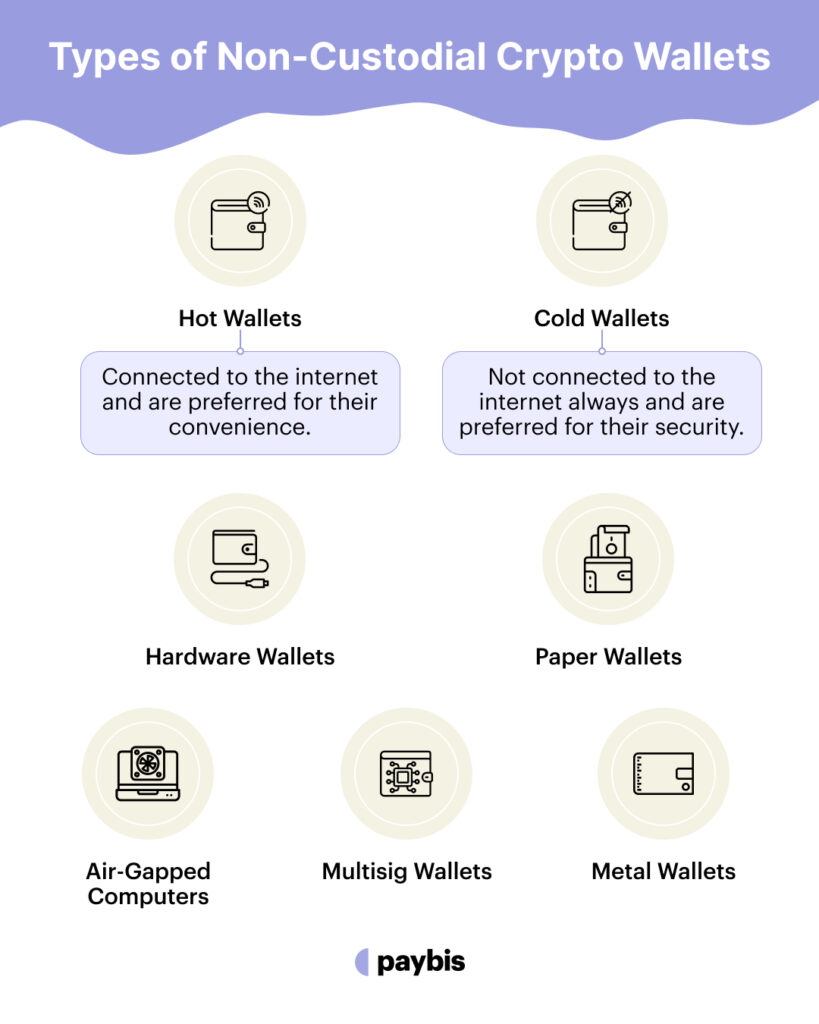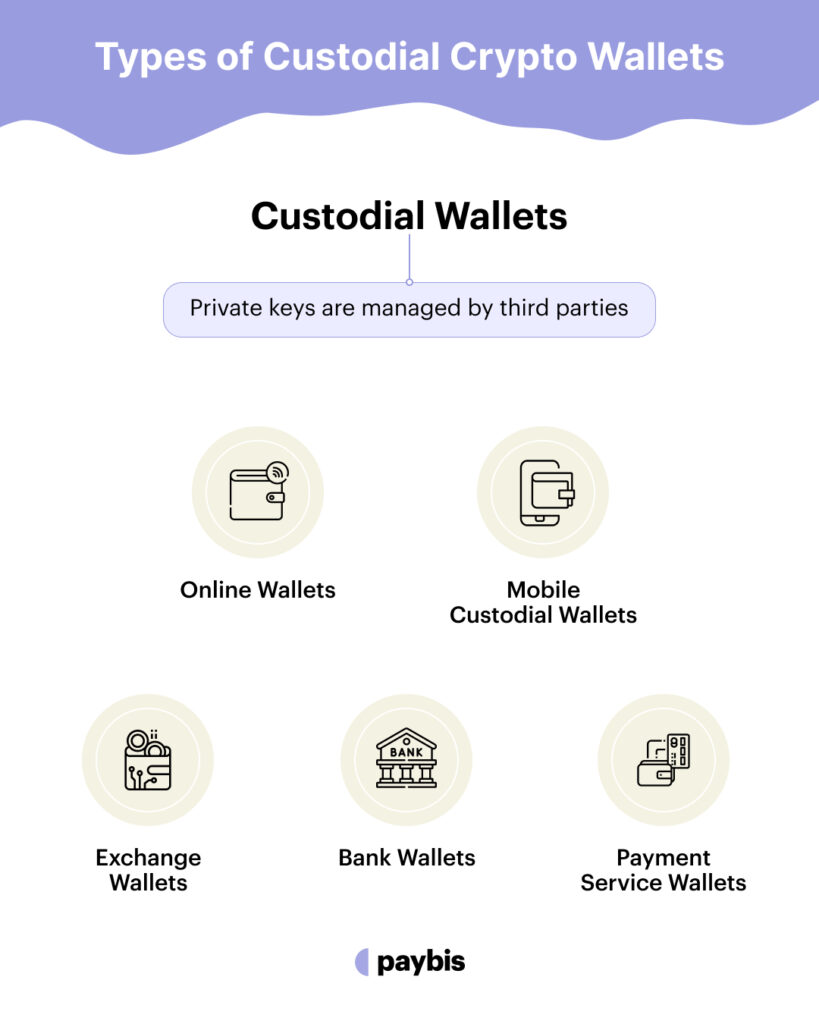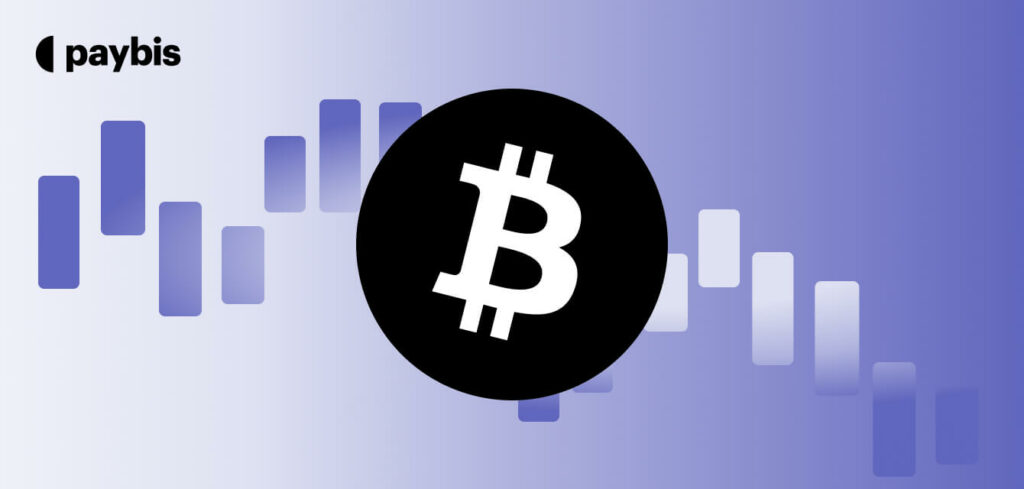How Custodial & Non-Custodial Wallets Differ
In the cryptocurrency space, one of the fundamental choices you’ll encounter is selecting the right wallet.
However, many are left in the dark about the differences, leading to a problem of unsecured assets and lack of control.
Your decision of a crypto wallet may lead you down two distinct paths: the custodial vs non custodial wallet. These two categories each offer unique features, advantages, and limitations.
Custodial wallets, managed by third parties, often bring about a sense of insecurity due to the intermediary control. On the flip side, non-custodial wallets provide the user with full control and the private keys to their assets, eliminating middlemen. Yet, the responsibility can be overwhelming, especially for newcomers.
In this article, we will dive into the differences between custodial and non-custodial wallets.
Table of contents
- What is a Custodial Wallet?
- What is Non-Custodial Wallet?
- Custodial vs Non Custodial Wallet
- Pros and Cons of Custodial Wallets
- Pros and Cons of Non-Custodial Wallets
- Types of Non-Custodial Crypto Wallets
- Types of Custodial Crypto Wallets
- What is a Deep Cold Storage Reserve?
- Clarifying Popular Wallet Types: Custodial or Non-Custodial?
- Is Paybis a custodial or non-custodial wallet?
- Is MetaMask a custodial or non-custodial wallet?
- Is Exodus a custodial or non-custodial wallet?
- Is Trust Wallet a custodial or non-custodial wallet?
- Is eToro a custodial or non-custodial wallet?
- Is Ronin a custodial or non-custodial wallet?
- Is Bitfinex a custodial or non-custodial wallet?
- Is Bybit a custodial or non-custodial wallet?
- Is FreeWallet a custodial or non-custodial wallet?
- Is Binance a Custodial or Non-Custodial Wallet?
- Final Thoughts
- FAQs
- What is the distinction between a non-custodial and a custodial wallet?
- Is non custodial crypto wallet more secure?
- Can you provide an example of a non-custodial wallet?
- Can you provide an example of a custodial wallet?
- What are private keys?
- Can I switch from a custodial to a non-custodial wallet, or vice versa?
What is a Custodial Wallet?
A custodial wallet is a cryptocurrency wallet that manages the private key on your behalf. You have the ability to withdraw your assets but this may be halted or suspended at the discretion of the custodian.
Think of a custodial wallet like a bank account. In this arrangement, the bank has custody of the funds, much like a custodial wallet, and customers trust the bank to secure their money, process transactions, and manage access to their accounts.
Just as bank customers do not hold their physical currency but rather access it through the bank, users of custodial wallets do not have control over their private keys but rely on third-party services to manage their cryptocurrencies.
While this provides a level of convenience and may offer some users peace of mind, it also means trusting the custodian to maintain high levels of security and to act in the customer’s best interest, much like trusting a bank with one’s savings.
What is Non-Custodial Wallet?
A non-custodial wallet is a cryptocurrency wallet that gives you complete control over your private key. This also means you are solely responsible for the safety of your assets. In the event of theft or hack, only you will be accountable.
However, these wallets provide complete financial autonomy and by following wallet security best practices, they could prove to be the most secure option for storing digital assets.
You act as your own bank, safeguarding your cryptocurrency holdings. These wallets are also known as “self-custody” wallets, reflecting the user’s responsibility for security.
So now you understand “what is custodial wallet” and “what is non-custodial wallet”. Let’s make a comprehensive comparison between custodial vs non custodial wallets in the next part.
Custodial vs Non Custodial Wallet
Custodial Wallets |
Non-Custodial Wallets |
|
| Private key management | Private keys are placed under the control of a custodian or third party. | Private keys and access to funds are fully under the control of the users. |
| Security | Private keys are stored on centralized servers, relying on the custodian’s security measures. | Users can determine how to secure their private keys. |
| Recovery options | Users may have recovery options if they forget their wallet password | Users risk losing access to their funds if they lose their private keys or seed phrase. |
| User experience | More user-friendly and doesn’t require deep blockchain expertise. | Less user-friendly and better suited to seasoned crypto users. |
| Offline accessibility | Private keys can only be accessed online. | Private keys for hardware wallets can be accessed and managed offline. |
As you navigate the differences between custodial and non-custodial wallets, it’s crucial to consider your needs and preferences. Understanding how to choose a crypto wallet will help you make an informed decision that best suits your cryptocurrency journey.
Pros and Cons of Custodial Wallets
Pros |
Cons |
| Custodial wallets typically offer a user-friendly interface, making it easy for beginners to set up and manage their wallet accounts. | Users do not have full control of their private keys and funds in custodial wallets, relying entirely on the wallet service provider. |
| Managing a custodial wallet is less stressful since the interface feels familiar and doesn’t require advanced technical knowledge. | The security of keys and funds depends entirely on the wallet service provider. If the provider, such as an exchange, gets compromised, customer funds could be at risk. |
| Full account recovery may be possible if a user forgets their password, offering a safety net for users. | If users lose their private keys or seed phrase, they may permanently lose access to their funds, with no recourse for recovery. |
Pros and Cons of Non-Custodial Wallets
Pros |
Cons |
| Users enjoy complete ownership and control over their cryptocurrency holdings, enhancing security and autonomy. | Users bear the sole responsibility for managing and safeguarding their private keys. Losing private keys or seed phrases, or having them stolen, can result in permanent loss of funds. |
| Non-custodial wallets allow users to store their private keys offline, significantly reducing the risk of malicious theft. | Non-custodial wallets often lack recovery options if private keys are lost or compromised, emphasizing the importance of vigilant key management. |
| These wallets enable direct interaction with the blockchain, facilitating engagement with decentralized applications and seamless crypto transfers. | Some non-custodial wallet interfaces can be complex and less user-friendly, potentially posing a learning curve for beginners. |
Types of Non-Custodial Crypto Wallets
Non-custodial wallets can be broadly categorized into hot wallets and cold wallets.
Hot Wallets
Hot wallets are digital wallets connected to the internet, facilitating easy access and transactions for cryptocurrency users.
Types of hot wallets include online (web) wallets, mobile wallets, and desktop wallets, each with its unique interface but sharing the common trait of internet connectivity.
One of the biggest advantages of hot wallets is their accessibility. Being connected to the internet, hot wallets allow users to access their funds from virtually anywhere, making them highly suitable for daily transactions and trading activities.
The connectivity of hot wallets to the internet also presents a significant security challenge. They are susceptible to a myriad of online threats including hacking, phishing attacks, and malware, making them less secure compared to their cold wallet counterparts.
However, many hot wallets incorporate security measures such as two-factor authentication (2FA) and encryption to mitigate these risks.
Cold Wallets
Cold wallets, also known as cold storage, refer to cryptocurrency wallets that are not connected to the internet. They are used to securely store a significant amount of cryptocurrencies and protect them from unauthorized access, cyber-attacks, and other potential risks associated with internet connectivity.
The cornerstone of cold wallets is the storage of private keys — the crucial digital codes required to access and transact cryptocurrencies — in a medium that is disconnected from the internet.
There are many types of cold wallets — from sophisticated hardware to a piece of paper. Let’s look at a few of them.
Hardware Wallets
These wallets are encapsulated in physical devices similar to USB drives, which house the private keys. They only interact with the internet when plugged into a computer for transactions, after which they revert to their offline state.
Paper Wallets
A simplistic yet effective form, paper wallets involve printing the public and private keys on paper. The safety of funds depends on the physical security of the paper.
Air-Gapped Computers
Cryptocurrency management software can be installed on computers that are never connected to the internet, providing a secure environment for storing and signing transactions.
Metal Wallets
Similar to paper wallets, but made from metal (like steel and titanium), these wallets are resilient to physical damage and ensure the longevity of the private keys.
Multisignature Wallets
Though not exclusively offline, multisignature wallets can be configured as cold storage by keeping some keys offline. They require multiple authorizations, enhancing security.
Types of Custodial Crypto Wallets
Custodial wallets, by nature, require a mechanism to manage and store private keys on behalf of users. This mechanism is typically facilitated through software.
Hence, unlike, non-custodial wallets, custodial wallets are software-based. The implementation of this software can vary. Let’s take a look at a few types.
Online Wallets
These wallets are accessible through web browsers. The private keys are stored on a server controlled by a third party.
The Paybis Wallet is an excellent example of a reliable online wallet. It takes care of your private key management while ensuring all your assets are safe.
Mobile Wallets
These are apps installed on a mobile device. Some mobile wallets are custodial, meaning a third party holds the private keys.
Examples include wallets like BitPay.
Exchange Wallets
Cryptocurrency exchanges, like Binance and Coinbase, often provide wallets for users to store and manage their funds within the exchange platform.
These are inherently custodial as the exchange controls the private keys.
Bank Wallets
Some traditional financial institutions are venturing into cryptocurrency and offering wallet services where they have custody of the private keys.
Payment Service Wallets
Payment services like PayPal, which have started to support cryptocurrency or launch their own, offer custodial wallet services as part of their platform.
What is a Deep Cold Storage Reserve?
Deep cold storage reserve refers to a secure method of storing a reserve of digital assets offline, making the retrieval of these assets significantly more challenging than depositing them. This is typically done to prevent theft or robbery, ensuring the safety of significant amounts of cryptocurrency assets over an extended period
This method is employed to enhance the security of the stored assets, shielding them from online threats like hacking, phishing, and unauthorized access.
A distinguishing feature of deep sold storage is the deliberate design to make the retrieval of stored assets a challenging task. This design is instrumental in ensuring that the stored assets remain untouched, thus fulfilling the long-term storage objective.
Due to its robust security features, deep sold storage is often employed in institutional settings where large reserves of cryptocurrencies need to be securely managed over long durations.
Clarifying Popular Wallet Types: Custodial or Non-Custodial?
Is Paybis a custodial or non-custodial wallet?
The Paybis Wallet is a custodial wallet. However, users can track their transactions and holdings on a blockchain explorer similar to a non-custodial wallet.
Is MetaMask a custodial or non-custodial wallet?
MetaMask is a non-custodial wallet.
Is Exodus a custodial or non-custodial wallet?
Exodus is a non-custodial wallet.
Is Trust Wallet a custodial or non-custodial wallet?
Trust Wallet is a non-custodial wallet.
Is eToro a custodial or non-custodial wallet?
eToro is a custodial wallet.
Is Ronin a custodial or non-custodial wallet?
Ronin wallet is non-custodial.
Is Bitfinex a custodial or non-custodial wallet?
Bitfinex is a custodial wallet.
Is Bybit a custodial or non-custodial wallet?
Bybit is a custodial wallet.
Is FreeWallet a custodial or non-custodial wallet?
FreeWallet is a custodial wallet.
Is Binance a Custodial or Non-Custodial Wallet?
Binance is a custodial wallet.
Final Thoughts
Whether to choose a custodial wallet or a non custodial wallet is not straightforward — it depends greatly on the users’ expertise, usage, and personal preferences.
Crypto culture usually dictates using a non-custodial wallet no matter what. However, that is not practical for many because not everyone is technically adept to understand public key cryptography and key management.
At Paybis, we believe that abstracting away complexities paves the way for the masses to enter the world of cryptocurrencies; and a crypto wallet at the heart of most web3 interactions.
We strongly advise using a Paybis BTC Wallet — the assets are stored in secure underground facilities and Paybis will never use them for its own operations. You can even check all of your transactions on a blockchain explorer just like any other non-custodial wallet because all deposits are on-chain.
For more insightful articles like this one, go to Paybis blog and check out other posts.
FAQs
What is the distinction between a non-custodial and a custodial wallet?
The fundamental distinction between non custodial vs custodial wallets lies in the management of private keys and, consequently, cryptocurrency assets. In a non-custodial wallet, users enjoy full control, whereas in a custodial wallet, a third party administers keys and assets on the user’s behalf.
Is non custodial crypto wallet more secure?
Non custodial crypto wallet is generally considered safer in terms of control and privacy. Since you manage your private keys, the risk of external breaches is lower. However, it comes with the responsibility of safeguarding your keys, which can be a double-edged sword.
Can you provide an example of a non-custodial wallet?
A non custodial wallet example is MetaMask. In a MetaMask wallet, users have full control over their private keys and can manage their cryptocurrency assets independently.
Can you provide an example of a custodial wallet?
A widely used custodial wallet example is the wallet provided by cryptocurrency exchange Binance. In this case, Binance manages users’ private keys and cryptocurrency holdings.
What are private keys?
Private keys are like the cryptographic gatekeepers of your digital assets in the world of cryptocurrencies. They consist of alphanumeric codes that act as the ultimate password to access and control your holdings. These keys play a crucial role in authorizing transactions and serve as irrefutable proof of ownership for your blockchain-based assets.
Can I switch from a custodial to a non-custodial wallet, or vice versa?
Yes, you can switch between wallet types. To do so, you can transfer your cryptocurrency holdings from one wallet to another. Keep in mind that the process may involve transaction fees and considerations for securing your private keys during the transition.
Disclaimer: Don’t invest unless you’re prepared to lose all the money you invest. This is a high‑risk investment and you should not expect to be protected if something goes wrong. Take 2 mins to learn more at: https://go.payb.is/FCA-Info





